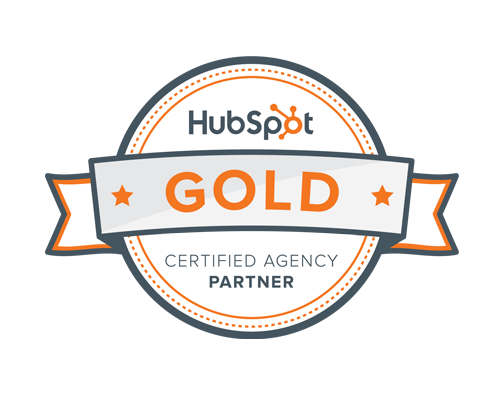
Don’t Let Hot Leads Go Cold: Prioritize Your Pipeline with Lead Scoring
At Möve, 72% of our clients have implemented lead scoring models and have seen visible boosts in conversion rates and pipeline value. In this blog, we’ll explore why traditional lead management falls short, define what lead scoring is, and break down how to align your scoring strategy with the customer journey to see impactful results.
What is Lead Scoring?
Lead scoring is a system that ranks prospects based on their likelihood to convert, assigning points to specific behaviors and demographic attributes. This allows sales and marketing teams to prioritize nurturing individuals or organizations that are most likely to become customers.
By strategically applying a lead scoring model, organizations can ensure their teams are spending time and resources where they have the greatest revenue potential, inherently creating a more efficient and effective sales process.
Why Traditional Lead Management Falls Short
Standard lead management often relies on simplistic rules to qualify leads. With this traditional approach, a sales team might focus solely on demographic information — like company size or industry — to select which leads to consider or reach out to. While these attributes remain important, they don’t paint a full picture of a lead’s intent or readiness to buy - while a lead scoring model can.
Consumers today showcase a wide array of behaviors as they move through the buyer’s journey. A strong lead scoring model tracks these actions, ensuring businesses can harness key opportunities and avoid wasting resources on unqualified leads. A well-built lead scoring model provides a data-driven approach to identifying and prioritizing high-value prospects.
Aligning Lead Scoring with the Customer Journey
An impactful lead scoring model aligns closely with the stages of the buyer’s journey and integrates into the sales and marketing processes to boost visibility into conversion potential. Here’s how:
Awareness Stage
At the top of the funnel, potential customers are at the very beginning of recognizing their problems or starting to explore potential solutions. Actions that signify awareness include viewing a blog article, downloading educational content, or signing up for a newsletter. These behaviors indicate potential buyers' curiosity and interest, but they don’t signal serious intent yet.
A lead scoring model will clarify these activities as reflection of their early-stage nature, so they’ll be assigned lower point values. For example, a lead who downloads a 1-pager might receive 15 points, whereas simply clicking on a blog post would be 5 points.
Consideration Stage
In the consideration stage, leads are actively evaluating options for the problem they’re facing. They might be comparing products, engaging with case studies, or requesting demos. This means these leads are naturally exhibiting a deeper level of interest and a higher likelihood of conversion.
At this stage, a lead scoring model will assign medium-level points to actions like:
-
- Comparing multiple product pages on your website
- Attending a webinar about your solution
- Downloading a detailed case study
Decision Stage
At the bottom of the funnel, leads are ready to find an answer to their problem and make a purchase. Things like requesting pricing or quotes or filling out a contact form to get in touch with your sales team indicate a high level of intent.
These actions will be assigned the highest point values. For example:
- Requesting pricing: +50 points
- Scheduling a demo: +25 points
- Engaging with bottom-of-funnel emails: +20 points
This segment of the lead scoring model helps sales teams understand which leads to engage immediately and boost the likeness of a deal.
Building a Customer Journey-Driven Lead Scoring Model
To effectively implement a lead scoring model, it’s essential to design it around your buyer personas and customer journey. Here’s a step-by-step guide:
Map Your Buyer Personas to the Customer Journey
Buyer personas are the foundation of any effective marketing strategy, especially a lead scoring model. To ensure you’re connecting with your audience at the right stage in their journey, define the characteristics, behaviors, and content preferences of each stage of the journey. For example:
- Persona 1: A mid-level IT manager looking for a cybersecurity solution
- Persona 2: A CTO seeking to understand where infrastructure improvements can be made
By interpreting each persona’s needs and behaviors, which would be supremely different given their persona, a lead scoring system can be created that is tailored to their journey.
Identify Key Touchpoints and Actions
It’s imperative to determine the actions that signal movement through the buyer’s journey, such as:
- Awareness: Blog visits, newsletter signups, top-of-funnel content downloads
- Consideration: Webinar attendance, product comparisons, middle-of-funnel content engagement
- Decision: Pricing inquiries, demo requests, direct communication with sales
Understanding the categorization of these touchpoints ensures your scoring model accurately shows the progression of a lead’s intent, and deepens your ability to connect with a potential purchaser – heightening your chances of gaining a long term loyal customer.
Assign Points Based on Journey Progression
As leads move closer to the decision stage, actions are assigned a higher volume of points to reflect their impact on conversion likeliness. For example:
- Awareness actions: 1–5 points
- Consideration actions: 10–20 points
- Decision actions: 20–30 points
This points structure of your lead scoring model demonstrates the level at which your teams need to engage with potential customers.
Leverage Marketing Automation
Marketing automation tools remain crucial to implementing a dynamic lead scoring system. These platforms automatically:
- Modify lead scores based on real-time behaviors
- Trigger personalized email campaigns and nurture sequences
- Notify sales teams when leads cross score thresholds
Why Lead Scoring Drives Revenue Growth
Lead scoring models deliver tactical results across the sales and marketing spectrum. Here’s how:
- Enhanced Sales Efficiency: Sales teams can focus on high-value leads, reducing time wasted on unqualified prospects.
- Shorter Sales Cycles: By engaging leads at the right time with tailored content, organizations can accelerate the buying process.
- Higher Revenue Potential: Prioritizing leads with the greatest likelihood to convert increases close rates and revenue per deal.
Lead scoring is not just a tool for prioritizing leads—it’s a strategic framework that inspires teams to align on an organization's overall goals and growth efforts.




